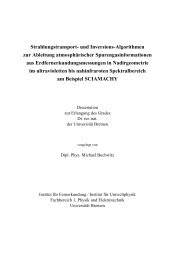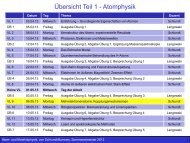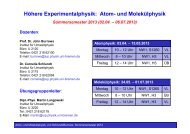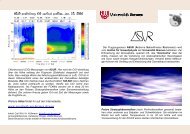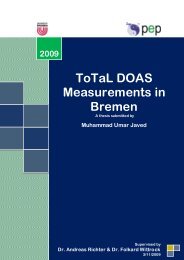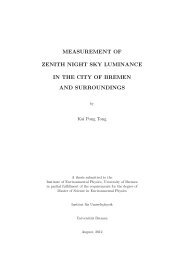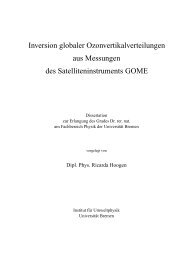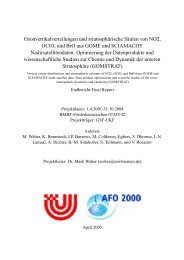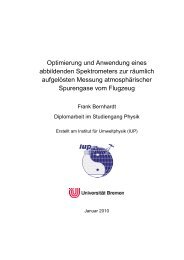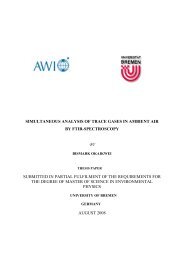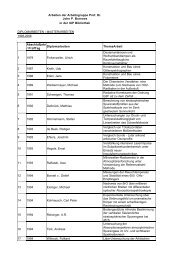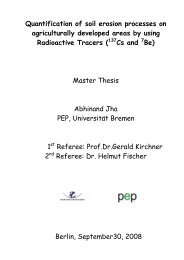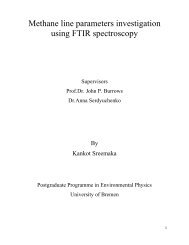True Coincidence Summing Correction in Gamma Spectroscopy
True Coincidence Summing Correction in Gamma Spectroscopy
True Coincidence Summing Correction in Gamma Spectroscopy
Create successful ePaper yourself
Turn your PDF publications into a flip-book with our unique Google optimized e-Paper software.
2<br />
<strong>True</strong> <strong>Co<strong>in</strong>cidence</strong> <strong>Summ<strong>in</strong>g</strong><br />
2.1 Introduction<br />
<strong>Gamma</strong> spectroscopy us<strong>in</strong>g HPGe detectors is commonly used for its high energy<br />
resolution. It can be used for the activity determ<strong>in</strong>ation of gamma-emitt<strong>in</strong>g<br />
radioactive sources provided the full-peak efficiency calibration curve is known. In<br />
that case, the efficiency value for each gamma ray energy is obta<strong>in</strong>ed by<br />
<strong>in</strong>terpolation. The measured peak efficiency curves should be corrected for cascade<br />
summ<strong>in</strong>g due to simultaneous detection of two or more gamma-rays from the same<br />
decay event <strong>in</strong>side the detector crystal.<br />
When the gamma rays arrive with<strong>in</strong> the width of the amplifier output pulse they will<br />
not be recognized as separate events. The result<strong>in</strong>g output pulse will be equivalent to<br />
the height of the first pulse received plus the height of the second pulse. This<br />
situation is demonstrated <strong>in</strong> Figure-2.1, <strong>in</strong> which the calculated preamplifier and<br />
17



